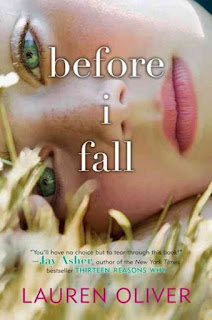Ramblings by Jeanne
With the holiday season breathing down our necks—er, fast approaching, it’s time to stop, take a deep breath, and remember some of the things we like about the holidays. It’s not going to be the rushing, the rowdy crowds, the cleaning, or the pressure to buy gifts, mail cards, and clean. (Yes, I did say list “clean” twice. I could list it a dozen times and it still is not going to happen at my house unless those elves decide they’re tired of the toy biz and want to try maid service instead. I’ll provide the cookies and milk!)
Back to happier subjects. One of the things I enjoy most about Christmas is the music. Mostly I enjoy old favorites but a few newer songs have crept in over the years. Here are ten of my favorite songs, in no particular order:
“Have a Holly Jolly Christmas” was written by Johnny Marks, the same man who wrote the song “
Rudolph the Red-Nosed Reindeer.” (The story was written by Marks’ brother in law Robert L. May for Montgomery Ward.) It was originally recorded by the Quinto Sisters but I first heard the Burl Ives version which was part of the “Rudolph the Red Nosed Reindeer” TV special. Numerous folk have recorded it, but my favorite versions are by Ives and Alan Jackson.
“I’ll Be Home For Christmas” was a huge hit for Bing Crosby and is still associated with him. It came out in 1943 and was a favorite of both the American troops and those they left behind. This lovely, melancholy song is one I pause and listen to no matter who the singer. There are many fine versions by both male and female singers; Martina McBride did a very nice one on her Christmas album. I don’t think I would have chosen this as a favorite a few years ago but as I get older and it becomes harder for family and friends to get together, this song becomes a poignant reminder of how much we take for granted.
“The Little Drummer Boy” is another one I think I first saw with the animated TV show. The song was originally called “The Carol of the Drum” and was written by Katherine Kennicott Davis, an American classical composer. The Von Trapp Family Singers (yes, THOSE Von Trapps!) recorded it very early. I don’t have a particular favorite singer on this one, but I’ve most often been asked about the Bing Crosby/ David Bowie duet, which is indeed a very fine version.
“Pretty Paper” by Willie Nelson always makes me think of
The Little Match Girl by Hans Christian Andersen, a story I cried over many times as a child. Nelson’s song captures the bustle of the season as well as the sadness. It’s not a particularly popular choice, perhaps because it’s not a song where everything comes right in the end. The shoppers still rush by, leaving the man to try to sell his “
pretty paper, pretty ribbons of blue/wrap your presents to your darling from you/pretty pencils to write I love you.” Roy Orbison had the first hit with this song, and I’ve heard it by others, but I still favor Willie’s version.
“Christmas Cookies” by George Strait is just a fun song. The only problem is that I start craving cookies after I hear it. With frosting. And sprinkles. Wouldn’t hurt to have George there, either.
“Santa Baby” is a song I didn’t quite get as a child but now I find very funny and always gets my feet moving. I know others have sung it, but for me Eartha Kitt OWNS that song. It was written in 1953 by Joan Javits and Tony Springer.
“We Three Kings” is certainly one of my favorites, but it isn’t recorded as often as some carols. I’m still searching for the perfect version, but two artists come close: Dolly Parton and John Berry. Berry’s version actually had three singers: Berry, Kenny Rogers, and Billy Dean.
“Do You Hear What I Hear?” was written by Noel Regney and Gloira Shayne in 1962, during the Cuban Missile Crisis as a plea for peace. It’s an amazing song which always draws my attention, no matter the singer.
“Walkin’ in a Winter Wonderland” was written in 1934 by Felix Bernard and Richard B. Smith. It’s a lively song, a bit romantic (providing you go with the original lyrics about Parson Brown and not the later circus clown) and is just plain fun. Dean Martin did a fine version as have many other people. It’s also a song that lends itself to parody. Let’s just say that Bob Rivers’ version made me laugh until I cried.
“Mary Did You Know?” was on Kathy Mattea’s
“Good News” Christmas album which came out in 1993. Simple and heartfelt, it made a big impression and remains my favorite version.
If anyone else has a favorite, please chime in below!













































